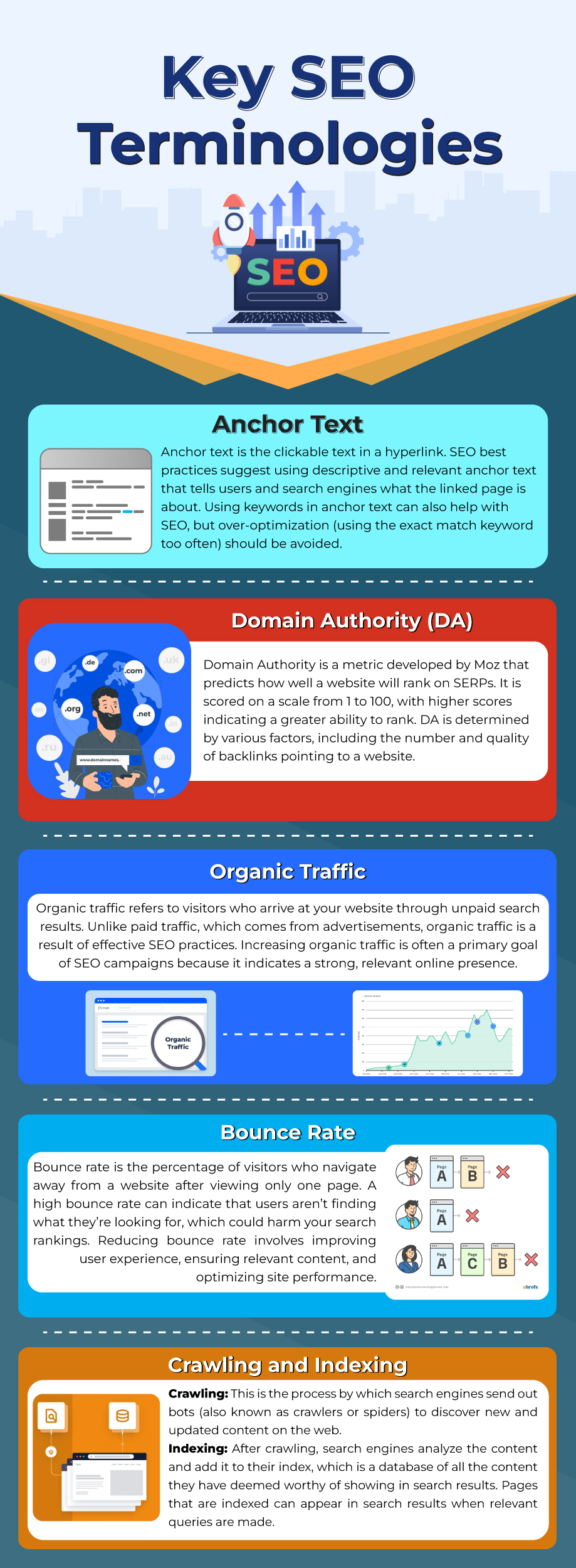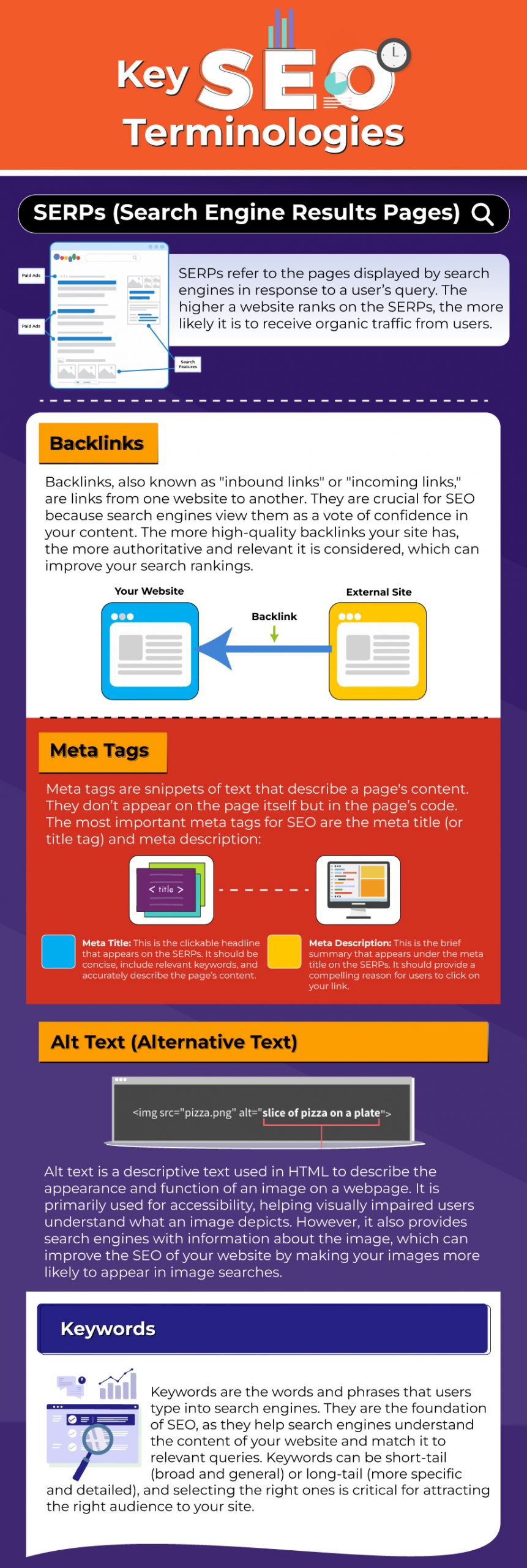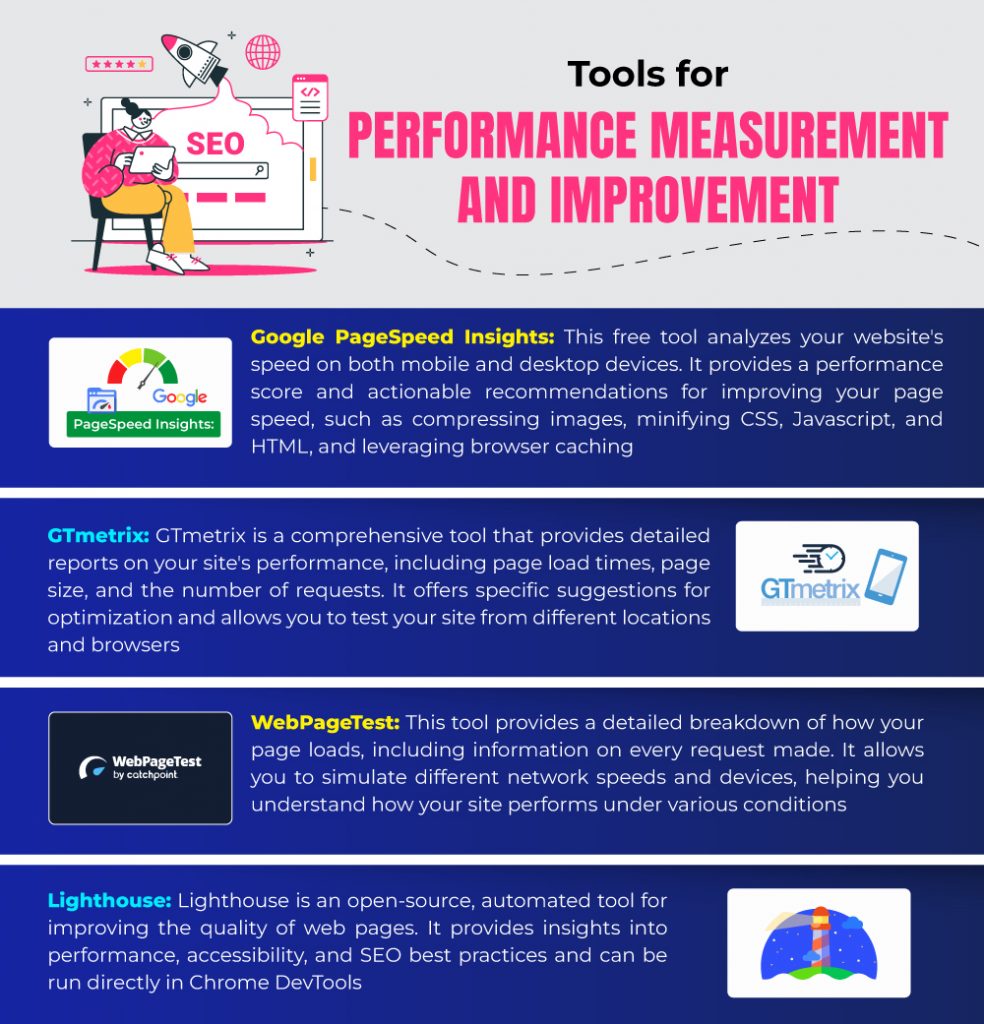SEO Unleashed: Conquer the World of Search (1/2)
In the digital age, where every click can make or break a business, mastering Search Engine Optimization (SEO) is more crucial than ever. This guide will walk you through the essentials of creating a powerful SEO campaign, from understanding the basics to implementing advanced strategies that boost your online visibility and reputation.
Chapter 1: Introduction
1.1 What is SEO and Why It Matters
SEO (Search Engine Optimization) is optimizing your website to improve its visibility in search engine results pages (SERPs) for relevant queries. By strategically adjusting your website’s content, structure, and technical elements, you can increase the likelihood of your site appearing higher in search engine results.
SEO campaigns are essential for businesses and website owners looking to enhance their online presence and achieve long-term success. Here are some key benefits:
- Increased Website Visibility:
- One of the primary goals of SEO is to improve a website’s ranking on search engine results pages (SERPs). By appearing on the first page of search results, especially in the top positions, a website is more likely to be seen by users. This increased visibility can significantly drive organic traffic to the site, leading to more potential customers discovering your products or services.
- Attracting Targeted Traffic:
- SEO is not just about driving traffic; it’s about attracting the right kind of traffic. By optimizing for relevant keywords and creating content that aligns with the search intent of your target audience, SEO campaigns can bring in visitors who are more likely to convert into customers. This means higher quality leads and more effective marketing efforts.
- Cost-Effectiveness:
- Unlike paid advertising, which requires ongoing financial investment, SEO focuses on earning organic traffic over time. While SEO requires an initial investment of time and resources, the benefits are long-lasting. A well-optimized website can continue to attract visitors and generate leads without the need for continuous spending on ads.
- Improved User Experience:
- Effective SEO goes beyond keywords and backlinks; it also involves enhancing the overall user experience. By improving site speed, mobile responsiveness, and navigation, SEO campaigns help ensure that users have a positive experience on your site. This not only helps in retaining visitors but also encourages them to explore more of your content, increasing the chances of conversion.
- Competitive Advantage:
- In today’s digital landscape, most businesses are competing for visibility online. An effective SEO campaign can give you a competitive edge by ensuring that your website ranks higher than your competitors for important keywords. This advantage can translate into more traffic, leads, and sales, helping you stay ahead in your industry.
- Higher ROI (Return on Investment):
- SEO provides one of the best returns on investment compared to other marketing strategies. Because SEO targets users who are actively searching for products or services like yours, it tends to generate higher conversion rates. By capturing traffic at various stages of the buying funnel, SEO ensures that you’re reaching potential customers who are ready to make a purchase.
Impact on Brand Reputation
- Building Trust and Credibility:
- When your website ranks highly on SERPs, it signals to users that search engines consider your site to be a credible and authoritative source. Most users trust search engines to provide relevant and reliable results, so appearing at the top of the list can significantly enhance your brand’s credibility. Over time, this trust can translate into brand loyalty and customer retention.
- Enhanced Brand Awareness:
- Consistently appearing in search results for relevant queries increases your brand’s exposure. Even if users do not click on your website immediately, repeated visibility can create brand recognition and awareness. As users become more familiar with your brand, they are more likely to engage with your content and consider your products or services in the future.
- Positioning as an Industry Leader:
- SEO allows you to establish your brand as an authority in your industry. By creating high-quality, informative content that addresses the needs and pain points of your target audience, you can position your business as a thought leader. When users frequently encounter your brand in searches related to their interests or concerns, it reinforces the perception that you are an expert in your field.
- Positive Brand Perception:
- Users tend to associate high search rankings with quality and trustworthiness. A strong SEO campaign can enhance your brand’s reputation by ensuring that your website provides valuable, accurate, and up-to-date information. This positive perception is crucial for building relationships with potential customers and encouraging them to choose your brand over competitors.
- Crisis Management and Reputation Control:
- SEO can also play a role in managing your online reputation. By optimizing your site and other online assets, such as social media profiles and press releases, you can control what information appears when users search for your brand. This is especially important in times of crisis or negative publicity, as it allows you to promote positive content and mitigate the impact of negative information.
- Sustained Online Presence:
- Unlike paid campaigns, where visibility ends when the budget runs out, SEO offers sustained visibility over the long term. A successful SEO campaign ensures that your site remains visible and relevant, adapting to changes in search algorithms and user behavior. This ongoing presence helps maintain brand recognition and keeps your business top-of-mind for potential customers.
1.2 The Evolution of Search Engines
Search engines have undergone significant transformations since their inception. The way search engines rank websites today is far more sophisticated than in the early days of the internet. Understanding this evolution is crucial for developing effective SEO strategies:


Chapter 2: Building a Strong Foundation
2.1 Conducting a Comprehensive SEO Audit
Before you embark on an SEO campaign, it’s crucial to perform a comprehensive audit of your website. This audit will help you identify areas that need improvement and ensure your site is fully optimized to rank well in search engines. Here’s how to conduct an effective SEO audit:
Site Architecture and Navigation
A well-structured site architecture and intuitive navigation are essential for both user experience and search engine optimization. During your audit, focus on the following aspects:
- Hierarchy and Structure: Ensure your website has a clear, logical hierarchy that makes it easy for users and search engines to find content. The most important pages should be easily accessible from the homepage, and your site should have a clear structure that flows logically from one page to another.
- User-Friendly Navigation: Navigation menus should be simple and intuitive, allowing users to easily find the information they need. Avoid overly complex menus with too many options, which can overwhelm users and reduce usability.
- Internal Linking: Use internal links to connect related content throughout your site. This not only helps users navigate your site more effectively but also allows search engines to crawl your site more thoroughly, understanding the relationships between different pages.
- URL Structure: Make sure URLs are descriptive and include relevant keywords where appropriate. Avoid long, confusing URLs with unnecessary parameters, and use hyphens to separate words for better readability.
Content Analysis
Content is one of the most critical components of an SEO strategy. During your audit, assess the quality and relevance of your existing content:
- Content Quality: Ensure all content is high-quality, informative, and relevant to your target audience. Content should be free from spelling and grammatical errors, well-researched, and provide value to readers.
- Keyword Optimization: Check that your content aligns with the keywords you are targeting. Keywords should be naturally integrated into your content, including titles, headings, and throughout the body text, without keyword stuffing.
- Content Gaps: Identify any gaps in your content that might prevent you from ranking for certain keywords or addressing specific user queries. This could include creating new content around underrepresented topics or updating existing content to provide more comprehensive coverage.
- Duplicate Content: Identify and resolve any instances of duplicate content, which can negatively impact your SEO efforts. Use canonical tags to indicate the preferred version of duplicate content or consolidate similar content into a single, authoritative page.
Technical SEO Elements (URL Structure, Meta Tags, etc.)
Technical SEO refers to the non-content elements of your website that can influence your search engine rankings. Key technical SEO elements to examine include:
- URL Structure: As mentioned earlier, ensure your URLs are concise, and descriptive, and include keywords where appropriate. Avoid using dynamic URLs with long strings of numbers or unnecessary parameters.
- Meta Tags: Meta tags, including the title tag and meta description, are crucial for SEO. Make sure each page has a unique title tag and meta description that accurately describes the content and includes relevant keywords.
- Header Tags: Use header tags (H1, H2, H3, etc.) to structure your content and make it more readable for both users and search engines. Ensure your primary keyword appears in at least one header tag on the page.
- Page Load Speeds: Slow-loading pages can hurt both user experience and search rankings. Use tools like Google PageSpeed Insights to analyze your site’s load times and identify areas for improvement. Consider compressing images, leveraging browser caching, and minimizing CSS and JavaScript to speed up your site.
- Mobile-Friendliness: With the rise of mobile browsing, having a mobile-friendly website is essential. Ensure your site is responsive and provides a seamless experience across all devices.
- Indexability and Crawlability: Check your site’s robots.txt file to ensure it isn’t inadvertently blocking search engines from crawling important pages. Use tools like Google Search Console to identify crawl errors and fix any issues preventing search engines from indexing your site.






2.2 Keyword Research and Analysis
Keyword research is the backbone of any successful SEO strategy. It involves identifying the terms and phrases your target audience is searching for and optimizing your content accordingly. Here’s how to conduct effective keyword research:
Identifying Target Keywords
Identifying the right keywords is essential for attracting the right audience to your website. Here are some steps to help you find target keywords:
- Brainstorming: Start by brainstorming a list of words and phrases relevant to your business, products, or services. Think about what your potential customers might type into a search engine when looking for what you offer.
- Keyword Research Tools: Use tools like Google Keyword Planner, SEMrush, Ahrefs, or Moz Keyword Explorer to identify high-volume keywords relevant to your business. These tools provide insights into search volume, competition level, and keyword difficulty, helping you choose the most effective keywords.
- Understanding User Intent: Understanding the intent behind the keywords you’re targeting is crucial. Keywords can be categorized into informational (searching for information), nautical (looking for a specific website), or transactional (ready to make a purchase). Make sure your content matches the intent of the keywords you’re targeting.
Long-Tail Keywords and Their Significance
Long-tail keywords are longer, more specific phrases that users search for. They might have lower search volumes than broad keywords but often have higher conversion rates because they attract highly targeted traffic. Here’s why long-tail keywords are important:
- Lower Competition: Long-tail keywords usually have less competition than more general keywords, making it easier to rank for them. This can be particularly advantageous for smaller businesses or new websites.
- Higher Conversion Rates: Since long-tail keywords are more specific, users who search for them are often further along in the buying process and more likely to convert. For example, someone searching for “best running shoes for flat feet” is likely closer to purchasing someone searching for “running shoes.”
- More Targeted Traffic: By targeting long-tail keywords, you can attract a more specific audience that is genuinely interested in what you offer. This can result in better engagement, lower bounce rates, and higher conversion rates.
Competitor Analysis in Keyword Selection
Analyzing your competitors’ keyword strategies can provide valuable insights and help you refine your keyword list. Here’s how to conduct a competitor keyword analysis:
- Identify Competitors: Start by identifying your main competitors, direct (those offering similar products or services) and indirect (those targeting the same audience with different offerings).
- Analyze Competitor Keywords: Use SEO tools to analyze the keywords your competitors are ranking for. Look for keywords driving significant traffic to their sites and consider whether these could be relevant to your business.
- Identify Gaps and Opportunities: Look for gaps in your competitors’ keyword strategies where you might have an opportunity to rank. This could include keywords they are not targeting or keywords with lower competition where you could potentially outperform them.
- Refine Your Keyword List: Use the insights gained from your competitor analysis to refine your keyword list, focusing on keywords that align with your business goals and have the potential to drive targeted traffic to your site.
By conducting a comprehensive SEO audit and thorough keyword research, you can build a strong foundation for your SEO campaign, ensuring your website is well-positioned to attract and convert your target audience.
Chapter 3: On-Page Optimization Strategies
Effective on-page optimization is essential for improving your website’s search engine rankings and enhancing user experience. By focusing on crafting SEO-friendly content, optimizing meta tags and descriptions, and enhancing multimedia elements, you can significantly boost your SEO efforts.
3.1 Crafting SEO-Friendly Content
Content is at the core of SEO. Creating high-quality, user-focused content that also appeals to search engines is crucial for achieving high rankings and engaging your audience.
Writing for Both Users and Search Engines
To effectively craft SEO-friendly content, it’s important to balance the needs of both users and search engines. Here’s how:
- Engage Your Audience: Focus on writing content that is informative, engaging, and valuable to your target audience. Use a conversational tone where appropriate and aim to answer the questions your users are asking. This will help keep readers on your site longer, which can positively impact your SEO.
- Optimize for Search Engines: While your primary focus should be on creating quality content for users, it’s also important to consider SEO elements. Include relevant keywords in your content, but avoid keyword stuffing, which can negatively impact readability and result in search engine penalties.
- Avoid Keyword Stuffing: Overloading your content with keywords (keyword stuffing) can make it feel forced and unnatural, detracting from the user experience and potentially harming your SEO. Instead, use keywords sparingly and naturally throughout your content to maintain a smooth flow.
- Provide Valuable Information: Make sure your content adds value to the reader. Answer questions thoroughly, provide solutions to problems, and offer insights that are backed by data or credible sources. High-quality, valuable content is more likely to be shared, linked to, and referenced by other sites, which can improve your SEO.
Importance of High-Quality and Relevant Content
High-quality and relevant content is one of the most important factors in on-page SEO. Here’s why:
- Increased Shareability: Content that is well-written and relevant to your audience is more likely to be shared on social media and linked to by other websites. These shares and backlinks are vital for increasing your site’s authority and improving its ranking on search engines.
- Audience Engagement: Content that addresses the specific needs and interests of your audience will keep users engaged longer, reducing bounce rates and increasing time on site. These engagement metrics are often considered by search engines when determining rankings.
- Boosting SEO Efforts: Search engines prioritize content that provides genuine value to users. High-quality content that answers user queries and provides comprehensive information is more likely to rank well. Additionally, relevant content attracts more traffic, which can further boost your SEO.
Incorporating Keywords Naturally
Keywords are an essential element of SEO, but they must be used thoughtfully and naturally within your content. Here’s how to incorporate keywords effectively:
- Natural Keyword Placement: Integrate keywords into your content in a way that feels organic. This means using them where they naturally fit, such as in the introduction, subheadings, and throughout the body text, without disrupting the flow of the content.
- Optimal Keyword Density: There’s no one-size-fits-all rule for keyword density, but aim for a density that feels natural. A good guideline is to use your primary keyword once every 100-150 words. This ensures the keyword is present without overloading the content.
- Synonyms and Related Terms: Use synonyms and related terms (also known as LSI keywords) to provide context and help search engines understand the full scope of your content. This also helps prevent the overuse of a single keyword, keeping your content diverse and engaging.
3.2 Optimizing Meta Tags and Descriptions
Meta tags and descriptions are critical components of on-page SEO. They help search engines understand your content and influence how users perceive your site in search results.
Title Tags, Meta Descriptions, and Header Tags
Optimizing meta elements is essential for both SEO and user experience:
- Title Tags: The title tag is one of the most important on-page SEO elements. It should be descriptive, include your primary keyword, and be compelling enough to encourage clicks. Keep title tags under 60 characters to ensure they display correctly in search results.
- Meta Descriptions: Meta descriptions provide a brief summary of your page content and appear beneath the title in search engine results. Although they do not directly impact rankings, a well-crafted meta description can increase click-through rates (CTR). Include relevant keywords and ensure the description accurately reflects the page content, keeping it under 160 characters.
- Header Tags (H1, H2, H3, etc.): Use header tags to structure your content logically. The H1 tag should contain your main keyword and clearly describe the page’s content. Subsequent headers (H2, H3, etc.) should break down the content into manageable sections, making it easier for users to read and for search engines to understand the structure and hierarchy of your page.
Best Practices for Optimizing On-Page Elements
To optimize on-page elements effectively, follow these best practices:
- Descriptive Titles and Descriptions: Ensure your title tags and meta descriptions accurately describe the content of each page. This not only helps with SEO but also improves user experience by setting accurate expectations.
- Use Keywords Wisely: Include your primary keyword in the title tag, meta description, and H1 tag. However, avoid keyword stuffing and ensure these elements read naturally and provide value to the user.
- Hierarchical Structure with Header Tags: Organize your content using a clear hierarchy of header tags. This helps search engines understand the main topics covered on the page and improves readability for users.
3.3 Image and Multimedia Optimization
Images and multimedia elements can greatly enhance user engagement and contribute to your site’s SEO. Here’s how to optimize them effectively:
Image Compression and Alt Tags
Optimizing images is crucial for improving page load times and providing additional context to search engines:
- Image Compression: Large image files can slow down your website, negatively affecting user experience and SEO. Use image compression tools to reduce the size of your images without sacrificing quality. This will help improve page load times and enhance overall site performance.
- Descriptive Alt Tags: Alt tags (alternative text) provide descriptions of images for screen readers and search engines. Use descriptive alt tags that accurately describe the content of the image and include relevant keywords where appropriate. This not only helps with SEO but also improves accessibility for visually impaired users.
Utilizing Multimedia for Better Engagement
Incorporating multimedia elements like videos and infographics can increase user engagement and contribute to better SEO:
- Videos: Videos are a powerful tool for engaging users and keeping them on your site longer, which can positively impact your SEO. Ensure your videos are relevant, high-quality, and provide valuable information. Host videos on your site or embed them from platforms like YouTube to enhance content without affecting load times.
- Infographics: Infographics are an excellent way to present complex information in a visually appealing format. They can increase engagement, encourage shares, and attract backlinks, all contributing to improved SEO.
- SEO Benefits of Multimedia: Multimedia elements like videos and infographics can reduce bounce rates, increase dwell time, and encourage user interaction, all of which are positive signals for search engines. Additionally, multimedia can help you rank in rich media results, such as video carousels or image packs, providing more visibility in search results.
Chapter 4: Technical SEO Essentials
Technical SEO focuses on optimizing your website’s backend structure and functionality to ensure search engines can crawl, index, and understand your content effectively. By addressing technical aspects such as website speed, mobile optimization, and structured data, you can enhance your site’s performance in search engine rankings.
4.1 Website Speed and Performance
Website speed and performance are crucial for both user experience and search engine optimization. A fast-loading website ensures a better experience for users and can significantly impact your search rankings.
Importance of a Fast-Loading Website
- User Experience: A fast-loading website provides a positive user experience, reducing frustration and encouraging visitors to stay longer. Slow-loading pages, on the other hand, can lead to higher bounce rates as users are likely to leave if a page takes too long to load.
- Search Engine Rankings: Page speed is a known ranking factor for search engines like Google. Websites that load faster are more likely to rank higher in search results. Google and other search engines prioritize fast-loading sites because they tend to offer a better user experience.
- Conversion Rates: Faster websites typically have higher conversion rates. When pages load quickly, users are more likely to engage with your content and complete desired actions, such as making a purchase or filling out a form.
Tools for Performance Measurement and Improvement
To improve your website’s speed and performance, you need to regularly measure and optimize it. Here are some tools and techniques:


- Key Optimization Techniques:
- Image Optimization: Compress and resize images without compromising quality. Tools like TinyPNG or ImageOptim can help reduce image file sizes.
- Minimize HTTP Requests: Reduce the number of elements on your page, such as scripts, images, and stylesheets, to decrease the number of HTTP requests required to load the page.
- Enable Browser Caching: Allow browsers to cache certain elements of your website, so they don’t need to be reloaded every time a user visits the page.
- Use a Content Delivery Network (CDN): CDNs store copies of your website on servers around the world, reducing latency and speeding up load times for users who are geographically distant from your primary server.
4.2 Mobile Optimization
As mobile internet usage continues to grow, optimizing your website for mobile devices is essential. Mobile optimization ensures that your website provides a seamless experience across all devices, which is critical for both user engagement and search engine rankings.
Responsive Design and Mobile-Friendly Websites
- Responsive Design: A responsive design automatically adjusts your website’s layout and content based on the device being used. This ensures that your site looks great and functions well on any screen size, from desktops to smartphones.
- Mobile-Friendly Features: To make your site mobile-friendly, ensure that text is readable without zooming, buttons are large enough to be easily tapped, and navigation is simple and intuitive. Avoid using Flash or other outdated technologies that are not supported on mobile devices.
- Importance for SEO: Search engines prioritize mobile-friendly websites in search results, especially with the rise of mobile-first indexing. A responsive design not only improves user experience but also helps ensure your site is properly indexed and ranked by search engines.
Mobile-First Indexing and Its Implications
- What is Mobile-First Indexing? Mobile-first indexing means that Google predominantly uses the mobile version of a site’s content for indexing and ranking. This approach reflects the shift in user behavior towards mobile devices and underscores the importance of having a mobile-optimized website.
- Implications for SEO: With mobile-first indexing, having a mobile-friendly site is no longer optional; it’s essential. If your site’s mobile version is not optimized, you could see a drop in search rankings and traffic. Ensure that your mobile site offers the same content and functionality as the desktop version to avoid negatively impacting your SEO.
- Key Considerations for Mobile Optimization:
- Content Consistency: Make sure that the mobile version of your site contains all the essential content present on the desktop version. Missing or hidden content can affect how your site is indexed and ranked.
- Page Speed: Optimize your mobile site for speed, as slow-loading pages can have a significant impact on user experience and rankings.
- Structured Data: Ensure that structured data is present on both the desktop and mobile versions of your site. Consistency in structured data helps search engines understand your content better.
4.3 Schema Markup and Structured Data
Schema markup, also known as structured data, is a type of code that you can add to your website to help search engines better understand your content. Implementing schema can lead to enhanced search results and improve your website’s visibility.
Enhancing Search Engine Understanding of Content
- What is Schema Markup? Schema markup is a semantic vocabulary of tags (or microdata) that you can add to your HTML to improve the way search engines read and represent your page in SERPs (search engine results pages).
- Benefits of Schema Markup: By using schema markup, you help search engines understand the context and meaning of your content, which can lead to more accurate and relevant search results. This can increase your chances of appearing in rich snippets, which are enhanced search results that often include images, reviews, and other detailed information.
- Types of Schema Markup: Various types of schema markup can be used depending on the content of your page, such as:


Implementing Schema for Rich Snippets
- How to Implement Schema Markup: Schema markup can be added directly to your website’s HTML using JSON-LD (JavaScript Object Notation for Linked Data), Microdata, or RDFa (Resource Description Framework in Attributes). JSON-LD is Google’s preferred format for implementing schema markup as it is easier to read and maintain.
- Tools for Implementing Schema:


- Benefits of Rich Snippets: Rich snippets provide more detailed information in search results, making your listing stand out. This can increase click-through rates (CTR) and drive more traffic to your site. Examples of rich snippets include star ratings for reviews, images for recipes, and event dates and times.
- Best Practices for Schema Implementation:
- Consistency: Ensure that your schema markup is consistent with the actual content on your page. Misleading or inaccurate schema can lead to penalties from search engines.
- Regular Updates: As schema vocabulary evolves, keep your markup up-to-date to ensure it aligns with the latest standards and best practices.
- Testing and Validation: Regularly test and validate your schema markup using Google’s tools to ensure it is implemented correctly and effectively contributes to your SEO efforts.
In this first part of our SEO series, we’ve laid the groundwork for creating effective search engine optimization campaigns. We’ve explored the basics of SEO, conducted a comprehensive audit, conducted thorough keyword research, and implemented on-page optimization strategies.
Key Takeaways:
- SEO is crucial: Understanding SEO is essential for improving online visibility and attracting organic traffic.
- Foundation is key: A strong SEO foundation is built on a comprehensive audit, keyword research, and on-page optimization.
- Content is king: Creating high-quality, relevant, and engaging content is vital for SEO success.
- Technical SEO matters: Ensuring your website is technically sound is essential for search engine rankings.
In the upcoming part, we’ll delve deeper into off-page SEO, local SEO, and advanced SEO strategies. Stay tuned for more insights and actionable tips to help you optimize your website and achieve your SEO goals.







